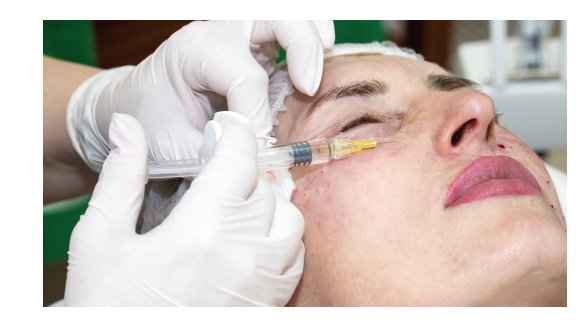With Dinesh Maini, MD

Wounds from minor dermatological surgeries injected intradermally with botulinum neurotoxin Type A (BoNT/A, Botox, Allergan) seem to heal faster and better than wounds not treated with adjuvant BoNT/A, according to Dinesh Maini, MD, Medical Director of the Zenith Cosmetic Clinic in Nottingham, United Kingdom, who recently published results of a series of his cases in the Journal of Drugs in Dermatology.
“We are talking small numbers, and this is more of an observational study,” Dr. Maini said. “But I observed scarring was quite dramatically reduced in those patients who had Botox in the wound. The wounds also healed quicker in those patients who had Botox in the wound. The difference seemed to be quite noticeable—almost months quicker in some patients.”
Typically, Dr. Maini uses BoNT/A as an adjunct in patients undergoing excision of intradermal naevi or sebaceous cysts in scar-prone areas, such as the deltoid or sternum, or if he must do a deep excision.
“When you treat on the face, healing tends to be pretty good. You do not really need any help if your stitching technique is up to scratch,” he said.
While he feels comfortable using the approach described in the paper and currently has experience with about 100 patients, Dr. Maini thinks more studies need to be performed before it becomes widespread practice.
“I do not think we can say anything based on such a small case series. We need to do pilot studies and proper full randomized controlled trials,” he said. “While there has been some research that suggests there may be something more to this, I would be very cautious about adopting it based on an experience with a few patients.”
Still, using BoNT/A intradermally in wounds appears to be safe. Dr. Maini said he has not seen one side effect or complication from the adjuvant injection.
“That is the beauty of it. We are using relatively small doses of only a few units on the trunk and limbs,” he said.
Dr. Maini has a few ideas about why BoNT/A might help wounds heal faster and better.
“Basically, I think Botox downregulates fibroblasts that are overactive,” he said. “I think the second thing, and probably the most important factor, is that Botox seems to reduce tension on the wound. You can get lots of contraction generated around the wound and that constant pulling and pushing might upset the healing process. Botox might reduce that.”
Since Dr. Maini only uses 5 to 7 units of BoNT/A to treat most wounds, the costs to add it to an excisional procedure should be minimal, he noted.
“But we would have to do a dose-response study to determine when one gets the best result. We need those answers, too,” Dr. Maini said.
Dr. Maini injects BoNT/A around the whole wound edge and has found that intradermal injections appeared to be more effective than subdermal.
“It does seem that those patients that got Botox in certain areas have not scarred as badly as I would have expected. And it seems to hold true. I have not come across anyone with Botox who had an awful result,” he said.
By Lisette Hilton
________________________________________________
REFERENCE:
Maini D. Botulinum Neurotoxin Type A as an Adjuvant to Reduce Scarring After Dermatological Surgery. J Drugs Dermatol. 2021 Jun 1;20(6):677-680. doi: 10.36849/JDD.2021.5807. PMID: 34076390.
_________________________________________________
DISCLOSURE:
Dr. Maini reports no relevant disclosures.

